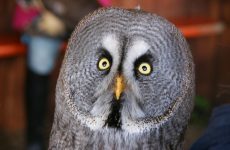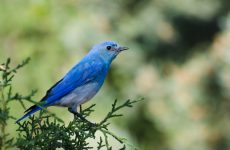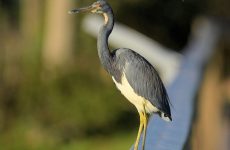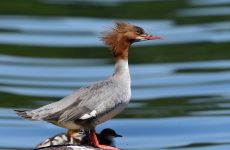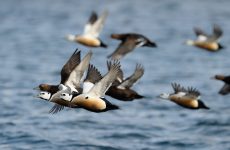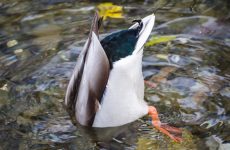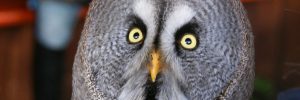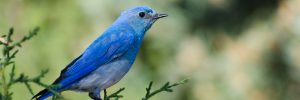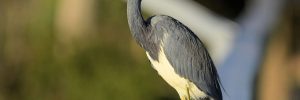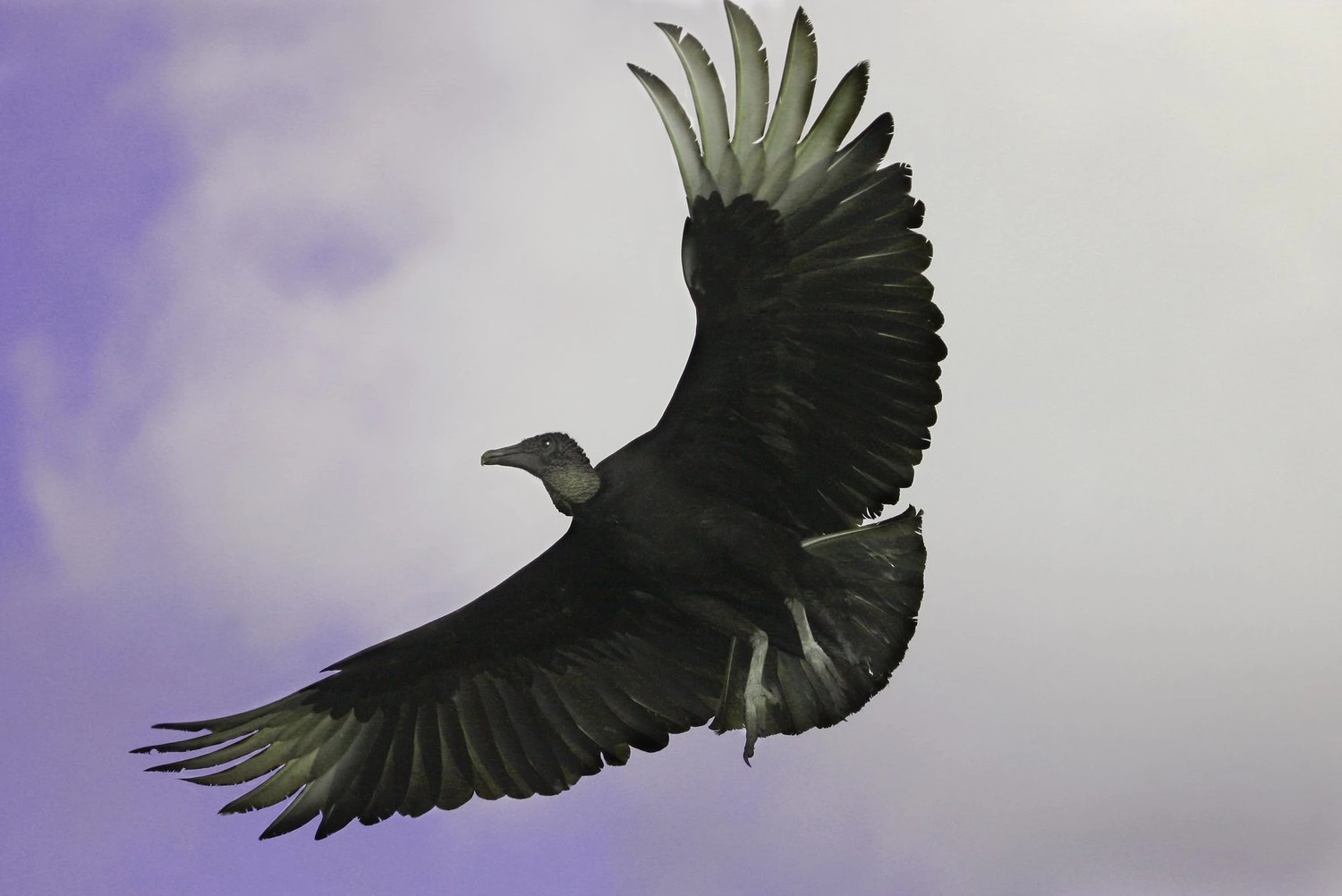
Vultures have some disgusting habits such as urinating on themselves to keep cool, only eating bacteria-laden dead animals which they stick their bald heads into to tear the flesh, and vomiting to escape from predators.
However, these disgusting habits are in fact brilliant adaptations that help the vultures to survive and clean up the environment for us.
Vultures urinating on themselves not only help to keep them cool but is also thought to kill the bacteria on their legs that they pick up when walking through the dead animals.
Vultures’ bald heads stop their feathers from getting congealed with blood from having to stick their heads inside carcasses to get to the flesh. Their legs are weak, and their talons are not strong enough to grab and hold the food, so they just use their powerful beaks to tear and rip.
The stomach acid of vultures is extremely strong, and this makes them one of the few animals that can safely eat the bacteria-laden carcasses that would potentially harm or kill other species, so getting rid of this harmful bacteria from the environment. Bacteria such as botulism and anthrax.
Vomiting to get away from predators is thought to enable them to be lighter to take off, as they gorge themselves so become very heavy, and it may provide a distraction.
Vultures lack vocal organs to make songs, but they can make deep hisses or grunts, especially when alarmed or jostling for a space at a carcass.
There are 23 species of vultures in the world and 3 of them live in North America. If you are interested in birds of prey, you should check out this guide to hawks in North America.
This guide will help you identify the types of Vultures spotted in North America according to avibase and uses data collected from bird watchers on ebird to give real information about when these birds can be spotted.
3 Species of Vultures in North America
1. Black Vulture

The body of the Black Vulture is black. They’re considered the blackest of all the vultures. Their backs, wings, breasts, bellies, and tails are black, although they have silvery patches on the underside of their wings that make it look like they have fingers when in flight. Their eyes are brown and they have grayish-white legs.
The Black Vulture has a gray, featherless head and neck that look like wrinkled skin.
Black Vultures are “bald” out of necessity because it needs to stick its head into the bodies of dead animals to get to their juiciest parts. Having feathers on their heads will make it hard for them to clean themselves up when bits and pieces of the carrion stick to the feathers.
The Black Vulture is also commonly called American Black Vulture but is not its official name. It’s only meant to distinguish it from the Eurasian Black Vulture, Aegypius monachus.
- Coragyps atratus
- Length: 23 – 27 in (58 – 69 cm)
- Weight: 76.8 oz (2177 g)
- Wingspan: 54 – 60 in (137 – 152 cm)
You can find Black Vultures in open areas of lowland and middle elevations. They are often seen in forested landscapes and roost in wooded areas that are close to water. Other habitats include shrublands, grasslands, swamps, and pastures, and they are even sighted in human-occupied towns foraging in trash cans and garbage dumps.
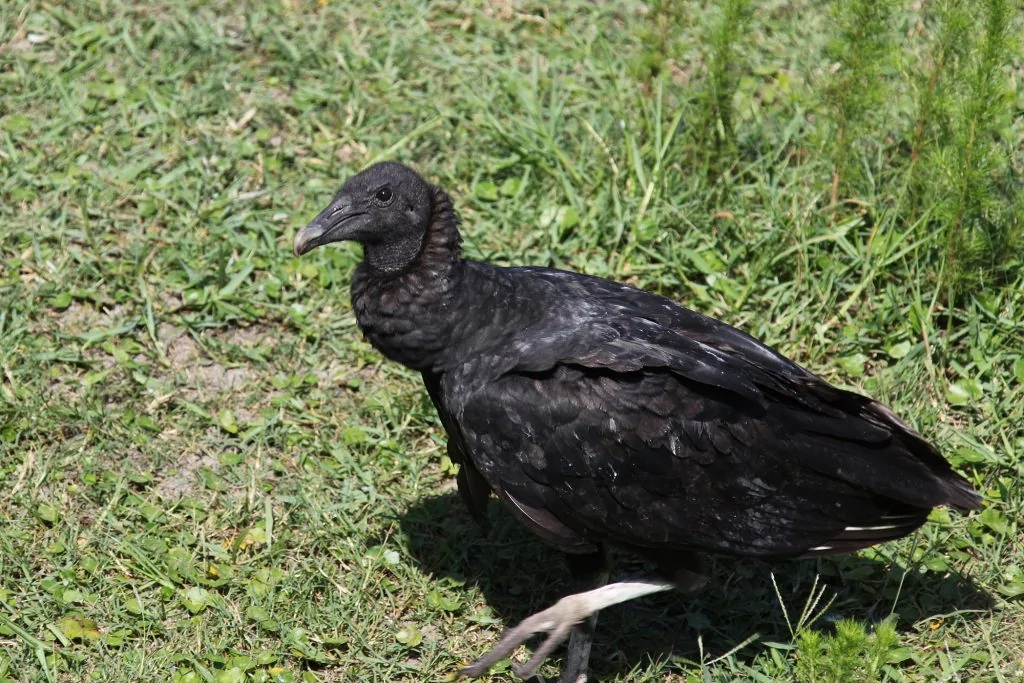
Black Vultures eat practically anything, but mainly they eat carrion or decaying animals. They may be able to see dead animals on the ground themselves, but they usually rely on other scavenger birds to direct them towards food.
They eat small to large-sized dead poultry, raccoons, coyotes, snakes, and even floating fish. They also kill small or vulnerable animals like newborn calves, lambs, and tortoises and spend time at the dumpsters and landfills rummaging among the trash.
Black Vultures Calls: They do not make many sounds and instead have a deep ‘coo’ grunt.
Nests of Black Vultures technically are non-existent since they don’t build them. They just lay their eggs on the ground in places like caves, abandoned buildings, and thickets. They may also put them inside hollow trees and tree stumps and re-use successful nesting sites for many years.
Female Black Vultures lay one to three eggs that both parents incubate for twenty-eight to forty-one days. Once they hatch, they are fed by their parents through regurgitation, meaning parents spit up food from their own stomachs and into the mouths of their babes. They nurture their young for as long as eight months.
Black vultures form strong social bonds such that they have communal roosts and they share food among relatives. They’re extremely selective about non-relatives joining in the communal roosts and will attack those who will try.
Fun Fact: The Black Vulture has a keen sense of sight but not a keen sense of smell, so it will follow others that have that skill in order to find food.
2. California Condor
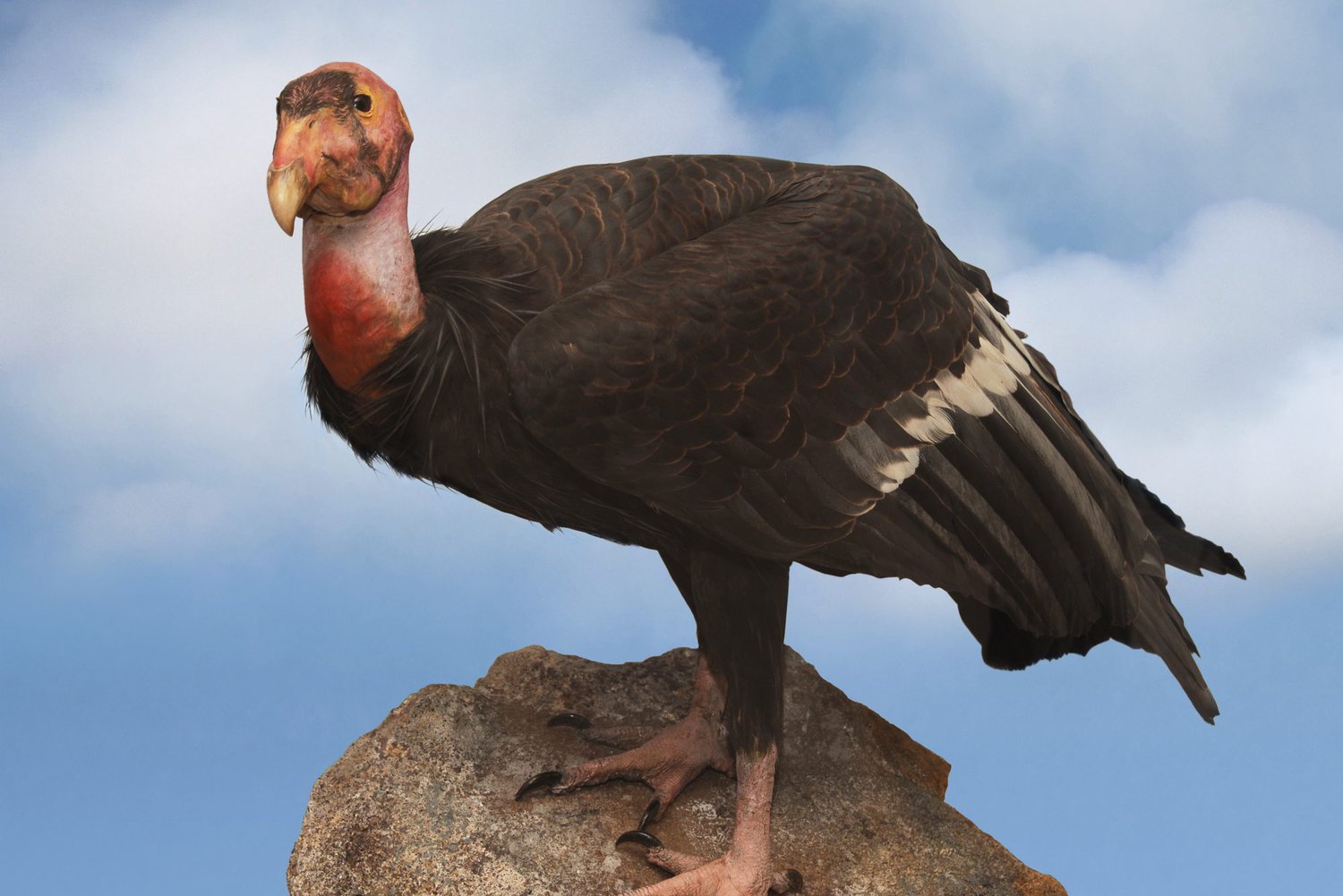
The California Condor is the largest North American land bird. It is a critically endangered species with only about 500 living individuals as of 2020.
California Condors are very large birds of prey. They resemble airplanes when in flight because of their broad wings, which they hardly flap at all. Their primary feathers also look like long “fingers” as they’re spread out when in the air.
California Condors have yellow skin coloring on their heads and necks. The color can change from yellowish to red (and variants in between) during courtship or when it’s angry or distressed. Their eyes are brownish-red with red scleras (surrounding the iris).
They have pinkish air sacs in the throat and near the breast area, which puff out during courtship or for aggressive displays. They also have black feathers around the base of their necks. Their backs and wings are black. The underside of the wings have triangular white patches that are visible in flight.
Juveniles look similar to adults, with the exception of the coloration on the head and the patches on the underside of their wings. A Juvenile’s head is mottled dark brown with black. Under its wings, the color is mottled gray instead of white.
- Gymnogyps californianus
- Length: 46 – 52 in (117 – 132 cm)
- Weight: 356.8 oz (10, 112 g)
- Wingspan: 72 – 108 in (183 – 274 cm)
You can find California Condors in a variety of habitats as they need open or semi-open grasslands, scrublands, and woodlands for foraging and nesting. They also need as much as 6,000 feet of elevation and open and windy areas, like cliff edges or exposed tree branches, to give them high perches for launching into flight.
The California Condor normally uses thermals, or upward currents of warm air, to gain height and keep them soaring in the air.
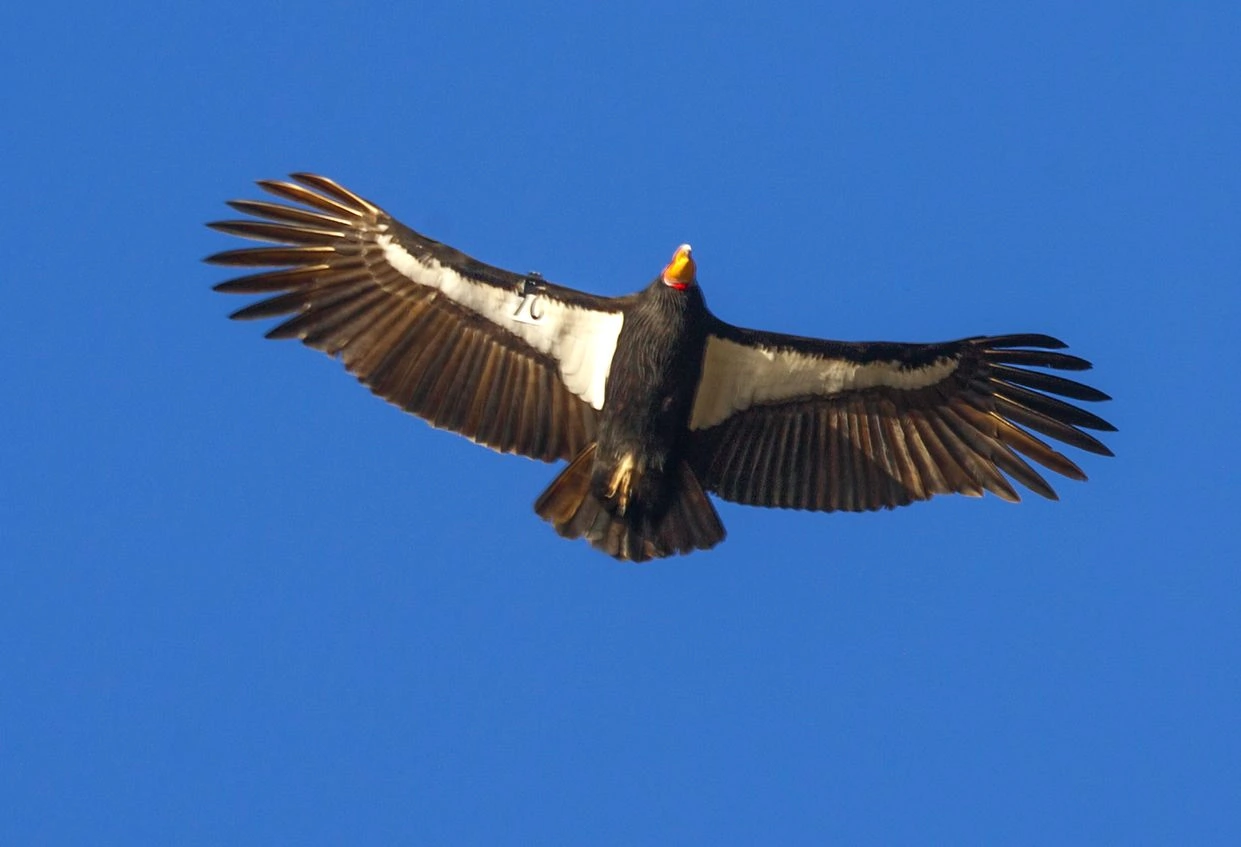
California Condors are carrion eaters. Carrion is flesh from any decaying animal. They eat medium to large-sized dead animals, preferably those recently killed or died. These animals include sheep, deer, elk, horses, sea lions, and whales. They eat even the bones of smaller animals to supplement their calcium needs.
California Condor calls: They are usually silent, but can make some grunts, hisses, or snorts.
Nests of Calfornia Condors are usually in cliff caves, but these are not actual nests because California Condors don’t actually build them. The female lays only one egg every other year. This is one of the reasons why their numbers are too few. But, the good thing is that they are known to “double clutch”, meaning they may lay another egg to replace a “lost” one.
Researchers then take advantage of this to double the reproductive rate by taking one egg to raise themselves and leaving the second egg for the actual parents to raise. Incubation is done by both parents for around fifty-five days. Once hatched, the young stay with their parents until they’re in their second year.
Fun Facts: California Condors have a long life span, reaching up to sixty years. They were originally almost extinct despite this, but conservation efforts have proven successful, and now there are as many as 500 birds in the wild and in captivity.
3. Turkey Vulture
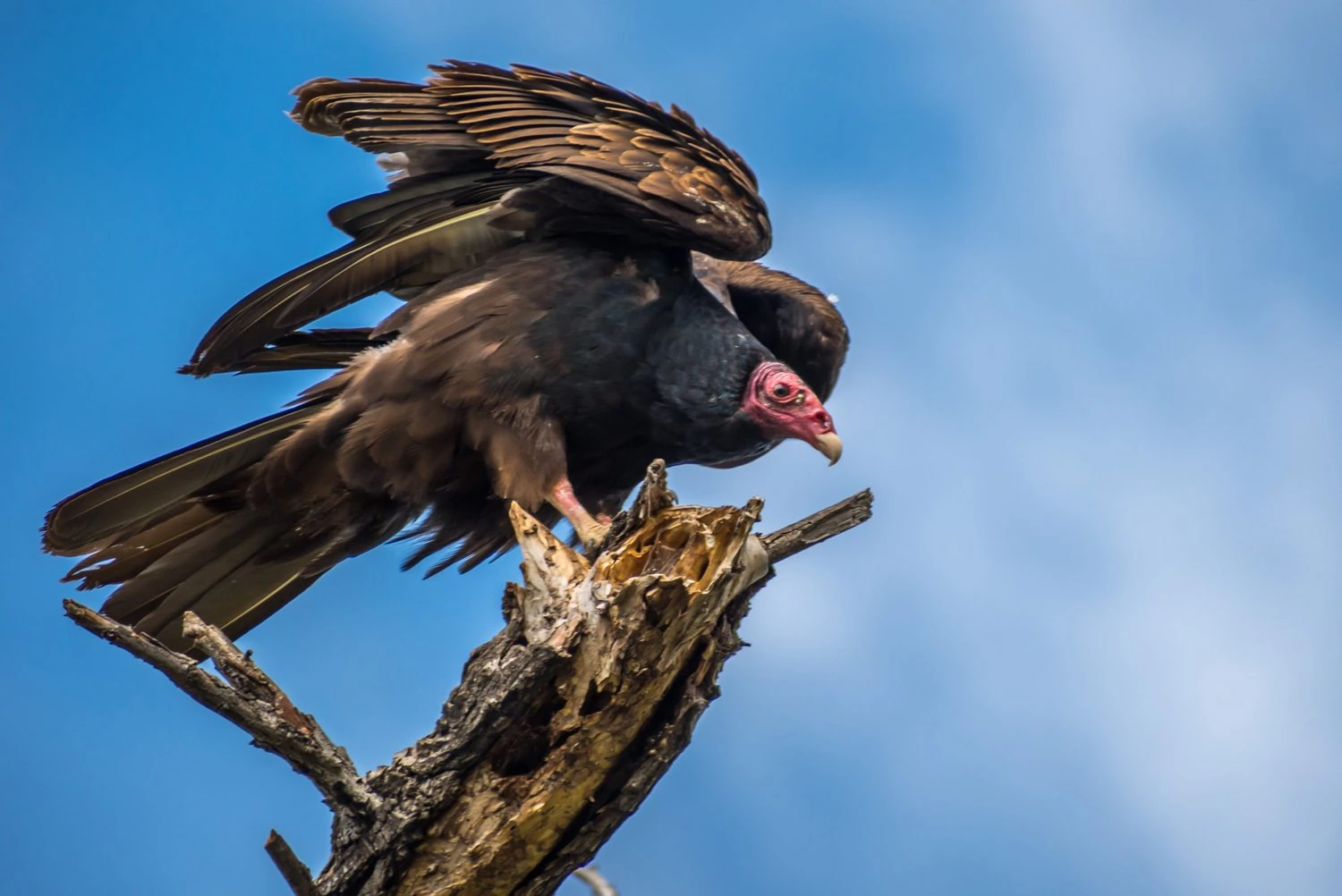
Turkey Vultures are aptly named. They do look like turkeys with their big, bald, red heads and upper necks and brownish-black bodies. However, they are larger than turkeys, and when they’re in flight, their broad wings are slightly raised and make a “V”.
Under their wings, they have gray coloring, making it seem like they’re two-toned. Their eyes are dark brown, and their bills are light-colored.
There are a total of 6 subspecies of Turkey Vultures, and three of them are in North America, which is why they are sometimes classified as “Northern” Turkey Vultures. There are only minor differences among them, mainly tail and wing proportions and color in the underwing feathers.
- Cathartes aura
- Length: 26 – 32 in (66 – 81 cm)
- Weight: 51.2 oz (1451 g)
- Wingspan: 68 – 72 in (173 – 183 cm)
You can find Turkey Vultures in a wide range of habitats, but the most common is open and semi-open areas next to woodlands. They need open areas, like grasslands, shrublands, deserts, and wetlands for foraging. They also need forests with high trees for nesting and roosting, and they need middle to high elevations, like hills and mountainous areas, to give them a height advantage for taking flight.
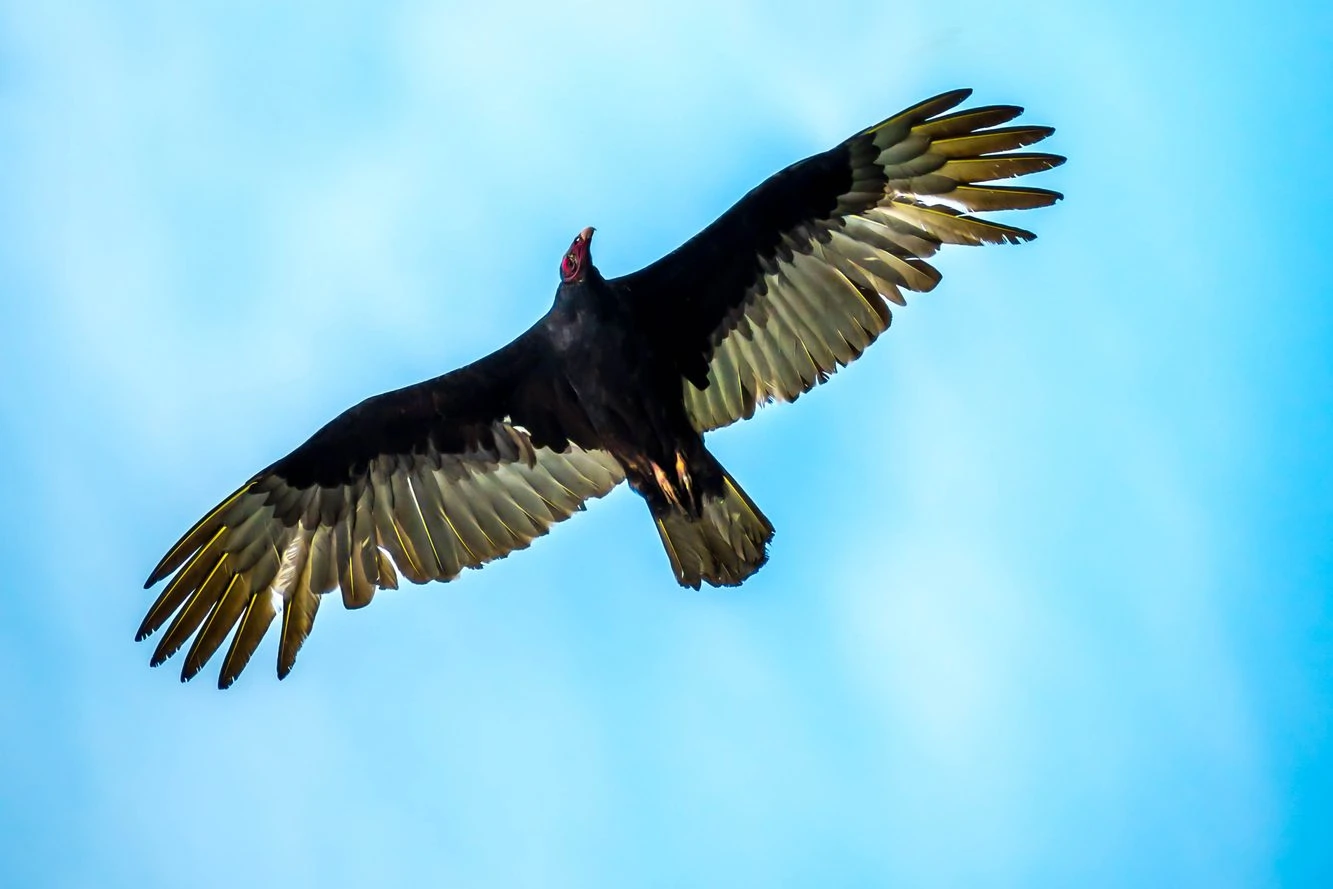
Sometimes, they will also venture into farmlands or pasturelands for foraging and roosting. Human-made structures are also taken over by them when they’re in urban areas, but only if they can’t find their preferred habitats.
Turkey Vultures’ main source of food is carrion or recently dead or decaying animals as long as it hasn’t decayed too much. They may feed on roadkill and washed-up fish and may even kill small or weak animals.
Turkey Vultures calls: They can only make a raspy hissing sound, but are usually silent.
Nests of Turkey Vultures are often found in sheltered areas, like crevices in cliffs and old buildings. They may also use hollow trees or logs and dense thickets. However, they don’t actually build nests. Instead, the female just lays one to three eggs on the ground at the nesting site. Incubation takes around thirty-eight to forty-one days and is accomplished by both parents.
Fun Facts: The sense of smell of Turkey Vultures is quite strong and they’re able to detect odors of decaying or dead animals on the ground from great distances.
When Turkey Vultures are threatened or aggravated, they will vomit to provide a distraction and fly away. They may even pretend to be dead.

